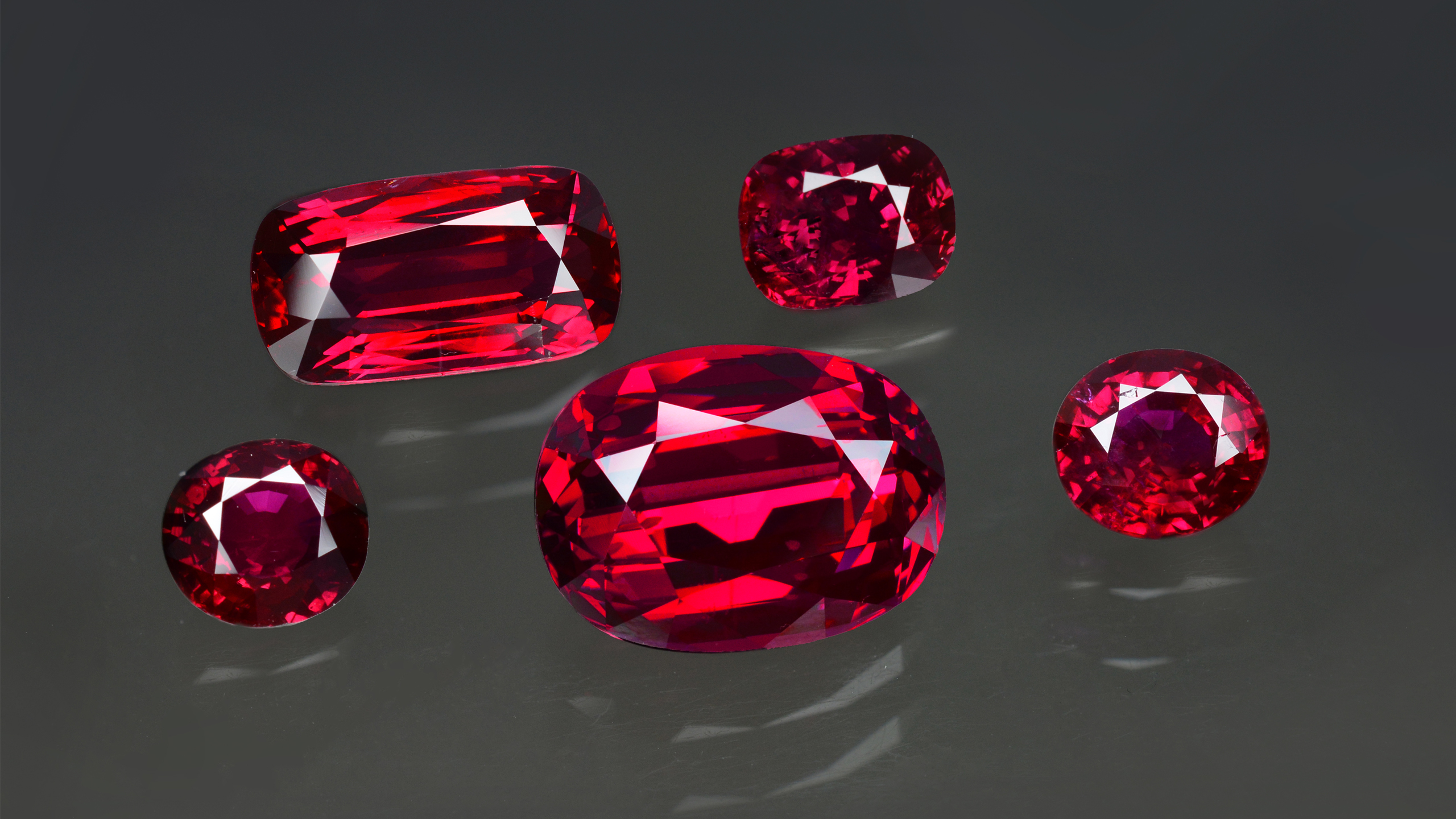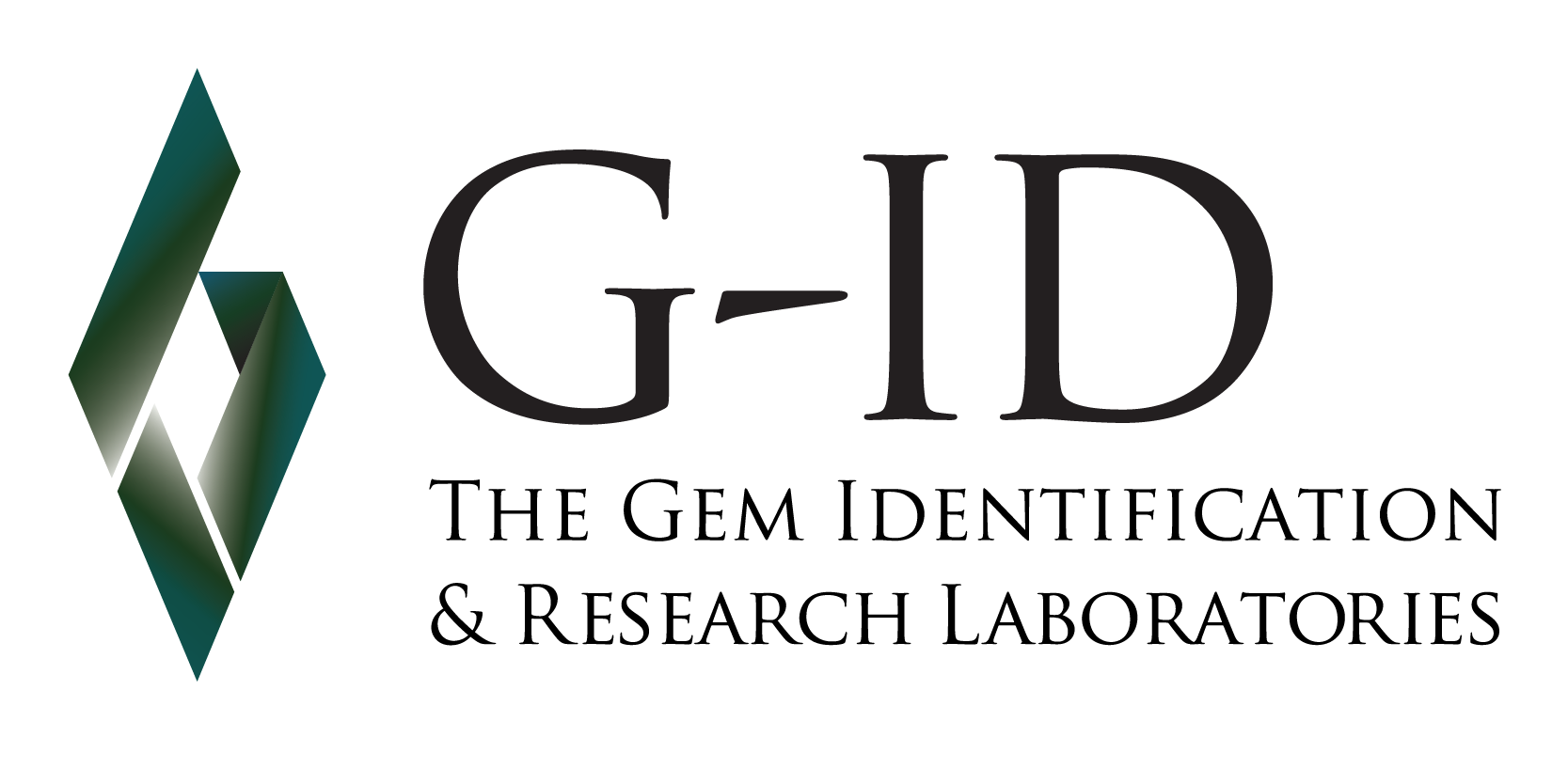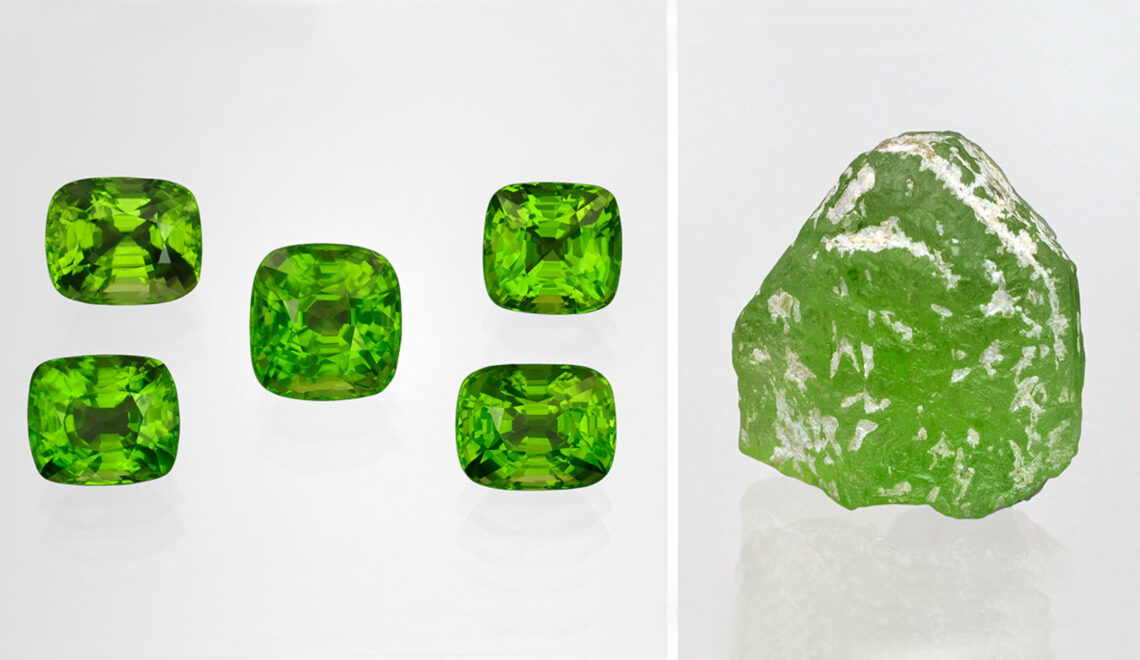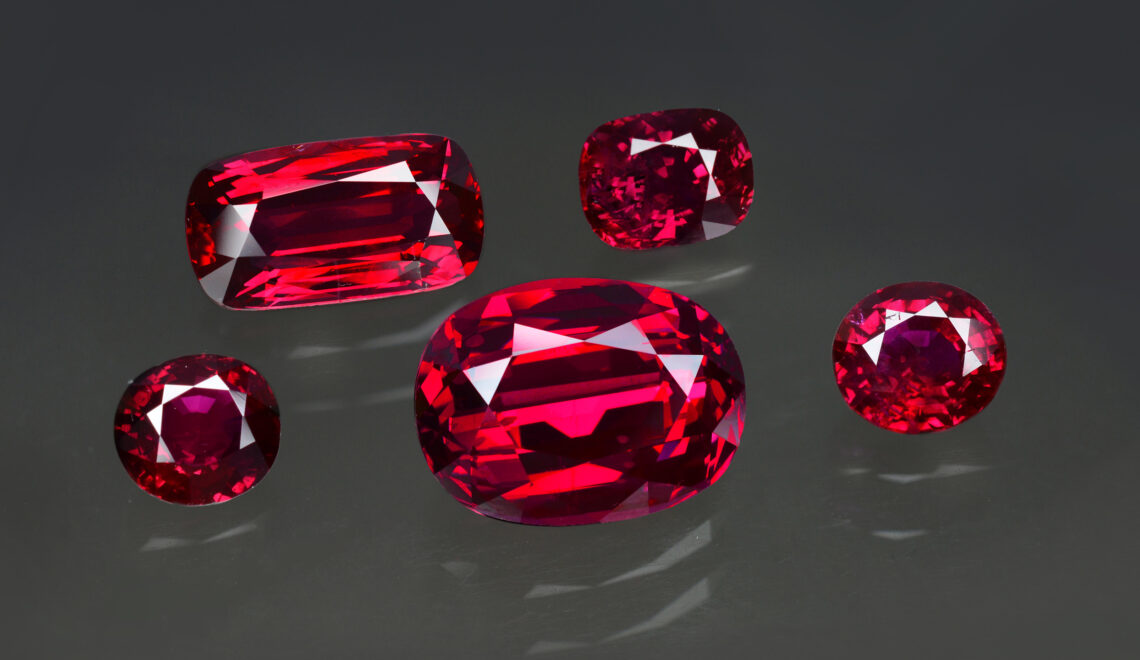Category
Research Article
Feature Article
GIA Gems & Gemology, Winter 2021, Vol. 57, No. 4
By Montira Seneewong-Na-Ayutthaya, Wassana Tasnara Sripoonjan
2022, Feb 14

Figure 1. Left: Five faceted peridot samples from the Pyaung-Gaung mine in Mogok, Myanmar, weighing 5.18–7.52 ct, were examined in this study. Right: This 15.0 × 16.9 × 6.5 mm rough crystal showing a rhombus-shaped tabular habit and rounded faces, with minor white carbonate and talc, is also from the Pyaung-Gaung mine. Photos by T. Sripoonjan.
The Pyaung-Gaung area in the Mogok township of Myanmar is one of the essential sources of high-quality peridot for the international gem trade. Pyaung-Gaung peridot possesses an attractive deep olive green color and can be found in large sizes (>10 ct) in the market. It has long been mined from ultramafic rocks, largely dunite, at a primary deposit near Bernard-Myo. Internal features consist mainly of circular decrepitation halos (“lily pads”), fluid inclusions, and fiber tufts. Common mineral inclusions are dark biotite-phlogopite and chromite, sometimes coexisting with serpentine, magnesite, chlorite, and talc. Pyaung-Gaung peridot also contains olivine inclusions not previously found in peridot from other locations. 2D and 3D cross-plots of the trace element contents of Cr, V, Co, Sc, Ni, and Ti provide helpful separations among Burmese, Chinese, and Pakistani localities.
Please wait while flipbook is loading. For more related info, FAQs and issues please refer to DearFlip WordPress Flipbook Plugin Help documentation.
1. The Gem and Jewelry Institute of Thailand (GIT), Bangkok, 10500 Thailand
2. G-ID Laboratories, Bangkok, 10120 Thailand
Research Article
Feature Article
The Journal of Gemmology, 2016, Vol. 35, No. 2
By Tasnara Sripoonjan, Bhuwadol Wanthanachaisaeng and Thanong Leelawatanasuk
2016, July 10

Figure 1: Mozambique has emerged asan important ruby source, as shown bythese untreated stones (1.02–5.93 ct).Photo by T. Sripoonjan.
In the past several years, Mozambique has emerged as one of the world’s most important sources of ruby, and unheated stones from this country are in particularly strong demand. Nevertheless, it is common for these rubies to undergo low-temperature heating (~1,000°C or below) to slightly improve their colour. The treated stones may show very subtle or no alteration of internal features (e.g. mineral inclusions, ‘fingerprints’, needles, ‘silk’, etc.). However, ‘iron-stained’ surface-reaching fractures in the rubies commonly display a noticeably more intense colour after heating. Raman and FTIR spectroscopy were used to document a transition from goethite to hematite within stained fractures in samples heated to 500°C and 600°C. The identification of hematite within such fractures provides key evidence for the low-temperature heat treatment of Mozambique ruby.
Please wait while flipbook is loading. For more related info, FAQs and issues please refer to DearFlip WordPress Flipbook Plugin Help documentation.
1. The Gem and Jewelry Institute of Thailand (GIT), Bangkok, 10500 Thailand
2. College of Creative Industry, Srinakarinwirot University, Bangkok, 10110 Thailand
Be First to know about new activities and more
©2025 G-ID Laboratories - All Rights Reserved.


